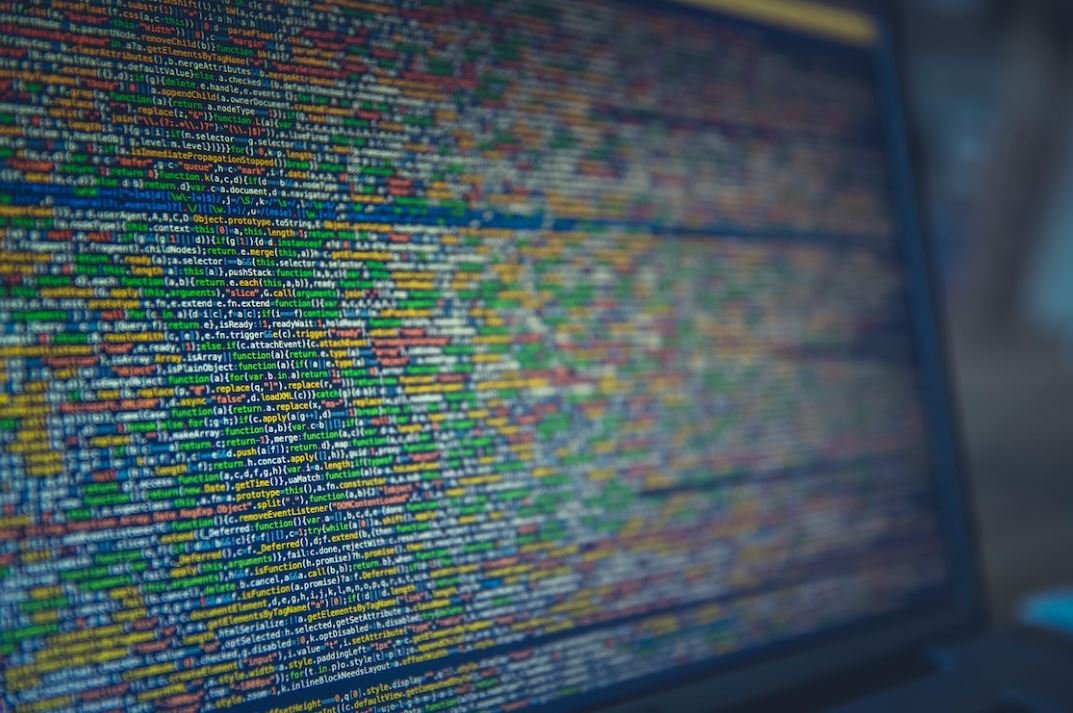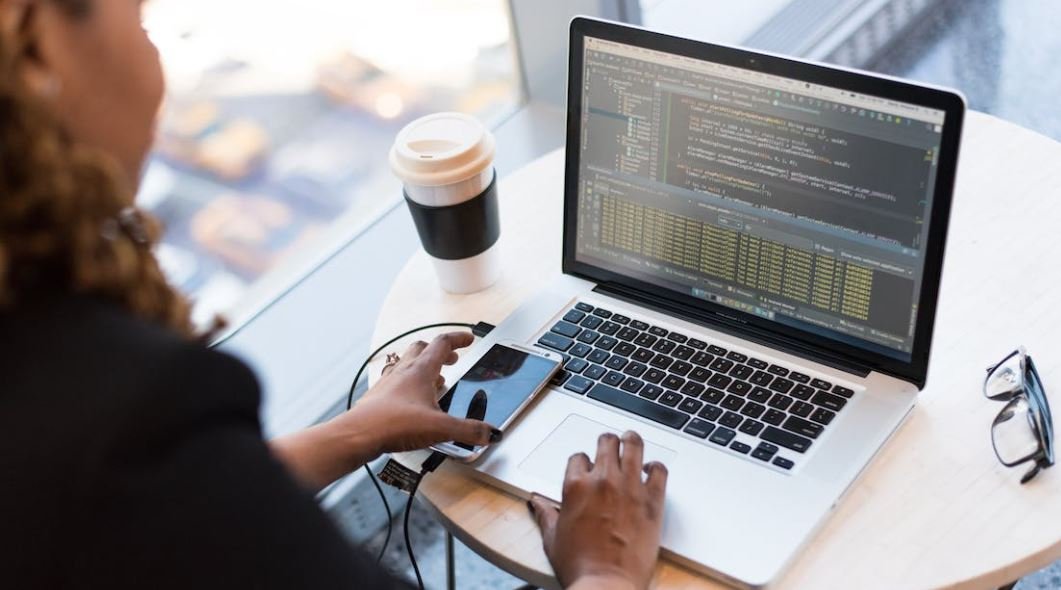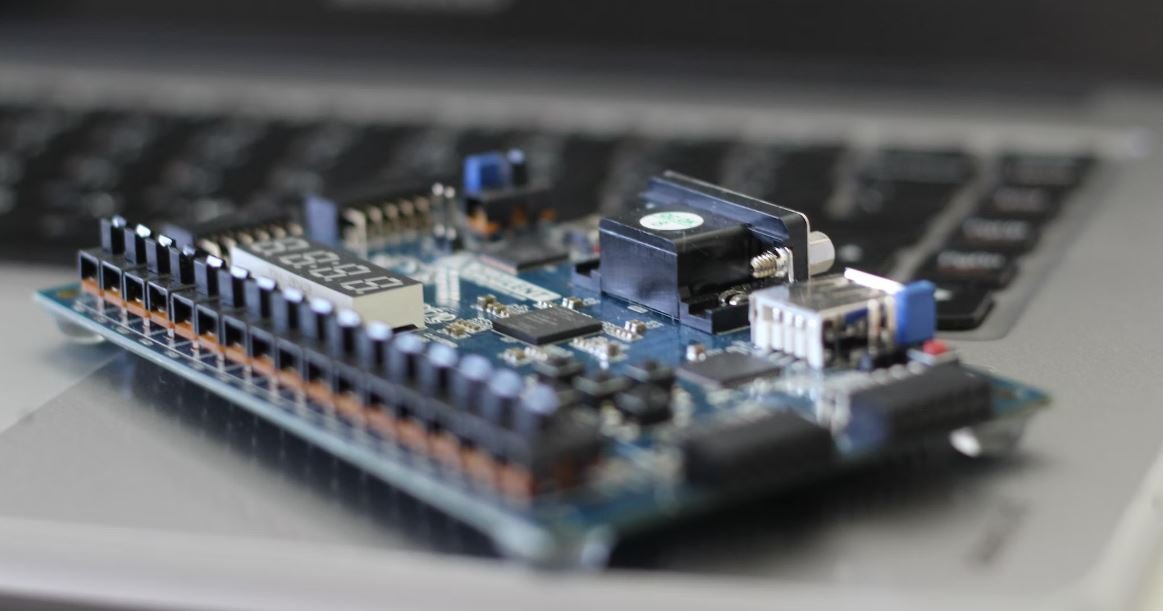AI Image Poisoning
As artificial intelligence (AI) continues to advance, so do the risks associated with it. One emerging threat is AI image poisoning, where malicious actors manipulate AI systems by injecting poisoned images into training datasets. This poses a significant challenge for the development and deployment of AI technologies. In this article, we will explore the concept of AI image poisoning, its implications, and potential defenses against this growing threat.
Key Takeaways:
- AI image poisoning involves injecting poisoned images into training datasets to manipulate AI systems.
- It poses a significant threat to the development and deployment of AI technologies.
- Adversarial attacks can deceive AI systems and cause them to make incorrect predictions.
- Understanding AI image poisoning is crucial for developers and researchers to mitigate its impact and enhance AI security.
Understanding AI Image Poisoning
AI image poisoning, also known as adversarial attacks or poisoning attacks, refers to the deliberate manipulation of AI systems by introducing poisoned images during the training phase. These poisoned images are carefully crafted to deceive the AI system and force it to make incorrect predictions.
The goal of AI image poisoning is to introduce subtle but intentional perturbations to images that can mislead the AI system. By adding imperceptible changes to an image, an attacker can trick AI algorithms into misclassifying or failing to recognize objects, leading to potentially dangerous consequences.
*AI image poisoning techniques are evolving rapidly, making it essential for researchers and developers to stay updated.*
Implications of AI Image Poisoning
The growing prevalence of AI image poisoning poses significant implications across various domains, including cybersecurity, autonomous vehicles, facial recognition systems, and more. Here are some notable consequences:
- Bypassing security systems: Adversarial attacks can manipulate AI-based security systems, such as object detection systems used in airports or surveillance systems, resulting in unauthorized access.
- Misleading autonomous vehicles: By poisoning the training dataset for autonomous vehicles, attackers can cause them to misinterpret road signs or recognize objects incorrectly, leading to potentially fatal accidents.
- Biased facial recognition: AI image poisoning can introduce biases into facial recognition systems, leading to misidentifications, privacy violations, and discrimination.
Defending Against AI Image Poisoning
As the threat of AI image poisoning grows, researchers and developers are actively exploring ways to defend AI systems against these attacks. Here are some strategies that can be employed:
- Adversarial training: Developers can expose AI systems to adversarial examples during training to make them more robust against poisoning attacks.
- Regular dataset evaluation: Regularly evaluating training datasets for potential poisoned images can help identify and remove them before they impact AI models and systems.
- Model explainability: Increasing the transparency and interpretability of AI models can enable developers to detect and mitigate adversarial attacks more effectively.
Table: Examples of AI Image Poisoning Attacks
| Attack Type | Description |
|---|---|
| Targeted attack | Attackers specifically aim to mislead AI systems in certain classes. |
| Universal attack | Poisoned images crafted to deceive AI systems across various classes. |
| Transfer-based attack | Targeting AI models trained on one dataset but misused in a different application domain. |
Table: Potential Defenses Against AI Image Poisoning
| Defense Strategy | Description |
|---|---|
| Input preprocessing | Applying filters to input images to remove potential adversarial perturbations. |
| Anomaly detection | Using anomaly detection algorithms to identify potentially poisoned images. |
| Robust model optimization | Optimizing AI models to be more resilient against adversarial attacks. |
The Ongoing Battle
AI image poisoning is an ongoing battle, as attackers continuously find new ways to deceive AI systems and researchers strive to enhance defenses against these attacks. *Staying vigilant and proactive in understanding and countering AI image poisoning is crucial for the security and trustworthiness of AI systems in the future.*

Common Misconceptions
Misconception 1: AI Image Poisoning is Completely Preventable
One common misconception is that AI image poisoning can easily be prevented. However, the reality is that AI models are susceptible to attacks, and the techniques used for poisoning are continually evolving. While researchers are constantly working on developing defenses against these attacks, the complexity of the problem makes it challenging to completely prevent image poisoning.
- AI image poisoning attacks often exploit vulnerabilities in the training datasets.
- Implementing robust defenses against image poisoning can be resource-intensive and may impact model performance.
- Ongoing research and collaboration between academia, industry, and government are essential to stay ahead of evolving attack techniques.
Misconception 2: AI Image Poisoning Only Affects Computer Vision Systems
Another common misconception is that AI image poisoning only affects computer vision systems, such as face recognition or object detection. While these systems are indeed more frequently targeted, image poisoning can also impact other AI applications, including natural language processing, speech recognition, and recommendation systems.
- Image poisoning can manipulate training data used for language models, leading to biased or false outputs.
- Attacks on speech recognition systems can cause misinterpretation of spoken words or even lead to unauthorized access.
- Poisoned image recommendations can spread harmful or inappropriate content to a wide audience.
Misconception 3: AI Image Poisoning Requires Expert Knowledge
Contrary to popular belief, AI image poisoning does not necessarily require expert knowledge or skills in artificial intelligence. Various tools and resources are now available in the public domain, making it easier for non-experts to carry out image poisoning attacks. This accessibility increases the potential for malicious actors, including individuals with limited technical expertise, to engage in these activities.
- Online platforms and forums offer step-by-step guides on how to perform image poisoning attacks.
- Pre-trained poisoning models and datasets are readily accessible, reducing the technical barrier to entry.
- Automated tools that assist in generating poisoned images are becoming more widely available.
Misconception 4: AI Image Poisoning Only Occurs in Targeted Attacks
Another misconception is that AI image poisoning only occurs in targeted attacks by a specific individual or group. While targeted attacks can be highly sophisticated and effective, image poisoning can also happen inadvertently or as a side effect of benign actions, such as using publicly available datasets or applying image modifications to improve AI model performance.
- Publicly accessible training datasets can contain poisoned images, impacting models trained on them.
- Small changes to image data, such as compression or resizing, can unknowingly introduce poisoning in some cases.
- Even unintentional distribution of poisoned images can have widespread consequences if used for training AI models.
Misconception 5: AI Image Poisoning Will Soon Become Irrelevant
Some people believe that AI image poisoning is a temporary concern and will become irrelevant as AI technologies advance. However, as AI systems become more pervasive and integrated into various aspects of our lives, the need to address and mitigate image poisoning will remain a persistent challenge.
- New AI models and algorithms may introduce new vulnerabilities and attack vectors that need to be addressed.
- As AI continues to advance, adversaries will also evolve their attack techniques to circumvent defense measures.
- Ongoing research and collaboration are necessary to keep up with the constantly changing landscape of AI image poisoning.

Introduction
AI image poisoning refers to a technique where an attacker manipulates images in order to deceive AI systems and lead them to make incorrect or harmful decisions. This emerging threat has the potential to disrupt various industries and compromise security measures. In this article, we present ten fascinating tables that illustrate the impact and implications of AI image poisoning.
Table: AI Image Poisoning Attacks
In this table, we outline different types of AI image poisoning attacks and their potential consequences. These attacks involve embedding subtle modifications in images that can trick AI systems into misclassifying objects or generating erroneous outputs.
| Attack Type | Description |
|——————-|———————————|
| Adversarial Noise | Adding minor perturbations to |
| | an image to change its label |
| Targeted Perturb | Modifying specific areas of an |
| | image to manipulate recognition |
| Label Flipping | Altering labels to misclassify |
| | objects in the image |
| Stealthy Poison | Crafting outlier images that |
| | confuse training algorithms |
Table: Noteworthy AI Image Poisoning Incidents
In this table, we highlight notable incidents where AI image poisoning attacks have occurred, leading to significant consequences. These incidents demonstrate how AI image poisoning can be leveraged to exploit vulnerabilities.
| Date | Incident | Impact |
|————|—————————-|———————————–|
| 2018 | Poisoned Medical Images | Misdiagnosis, incorrect treatments |
| 2019 | Autonomous Vehicle Attack | Collision avoidance failure |
| 2020 | AI-Generated Deepfakes | Malicious misinformation spread |
| 2021 | Poisoned Security Cameras | Unauthorized access allowed |
Table: Industry Vulnerabilities to AI Image Poisoning
This table outlines various industries and the potential vulnerabilities they face due to AI image poisoning attacks. From healthcare to authentication systems, these industries need to be aware of the risks and take appropriate countermeasures.
| Industry | Vulnerabilities |
|——————|————————————————|
| Healthcare | Misdiagnosis, incorrect treatments |
| Autonomous Cars | Collision avoidance failures |
| Banking | False identification, fraudulent transactions |
| Social Media | Malicious content spread, privacy invasion |
Table: Preventive Measures for AI Image Poisoning
In this table, we present preventive measures that organizations can adopt to mitigate the effects of AI image poisoning attacks. By implementing these strategies, it is possible to enhance the resilience of AI systems and safeguard against potential threats.
| Measure | Description |
|————————|————————————————-|
| Robust Model Training | Incorporating diverse datasets during training |
| Input Validation | Checking input images for malicious components |
| Adversarial Training | Training models against potential attacks |
| Constant Vigilance | Regular monitoring and updating of AI systems |
Table: Research Advancements in AI Image Poisoning
This table showcases recent research advancements aimed at mitigating AI image poisoning attacks. By developing novel techniques and algorithms, researchers are continuously working to combat this growing threat.
| Research Topic | Description |
|———————|————————————————–|
| Defense-GANs | Using generative models for robust defense |
| Data Augmentation | Modifying datasets to enhance model resilience |
| Explainability | Improving transparency in AI decision-making |
| Ensemble Methods | Combining multiple models for enhanced security |
Table: Impact of AI Image Poisoning on Image Classification Accuracy
This table presents the impact on image classification accuracy when AI models are subjected to poisoning attacks. It highlights the degradation in performance and the potential consequences of such attacks.
| Attack Type | Average Accuracy Drop |
|——————-|———————–|
| Adversarial Noise | 20% |
| Targeted Perturb | 15% |
| Label Flipping | 10% |
| Stealthy Poison | 25% |
Table: AI Image Poisoning vs. Traditional Adversarial Attacks
By comparing AI image poisoning attacks with traditional adversarial attacks, this table highlights the unique characteristics and challenges posed by this emerging threat.
| Attack Type | Distinctions |
|——————-|————————————————————————————————————————–|
| AI Image Poison | Targeting the input data rather than the model architecture |
| Traditional | Manipulating model parameters or structure |
| Adversarial | Generating noticeable perturbations that are easily detectable |
| Attacks | Crafting subtle, imperceptible modifications in images |
Table: Future Implications of AI Image Poisoning
This table explores possible future implications of AI image poisoning, considering the progress of this technique and how it may affect different areas of society.
| Domain | Implications |
|—————–|——————————————————|
| Elections | Manipulation of AI-powered vote counting systems |
| Criminal Trials | Creation of manipulated evidence |
| National Security | Disruption of surveillance systems |
| Virtual Reality | Deception in immersive experiences |
Conclusion
AI image poisoning represents a growing threat that can have substantial consequences across various industries and domains. As demonstrated through the tables presented in this article, the impact of AI image poisoning can lead to misclassification, manipulation, and exploitation. It is imperative for organizations to understand the risks and implement appropriate safeguards to ensure the integrity and reliability of AI systems in the face of this emerging threat.
Frequently Asked Questions
What is AI image poisoning?
AI image poisoning refers to the manipulation of images with the intent of misleading or confusing an artificial intelligence (AI) system. By injecting visual distortions or malicious elements into an image, attackers aim to deceive AI algorithms and cause incorrect or harmful outcomes.
How does AI image poisoning work?
AI image poisoning typically involves the addition of subtle or imperceptible alterations to an image that can alter the behavior of an AI model. These alterations are strategically designed to trigger false identifications or misclassifications by the AI system, leading to compromised performance.
What are the potential consequences of AI image poisoning?
The consequences of AI image poisoning can be significant. For example, in autonomous vehicles, poisoned images could cause an AI system to misinterpret road signs, leading to dangerous driving decisions. In security systems, manipulated images might fool facial recognition algorithms, enabling unauthorized access. AI image poisoning can also raise ethical concerns, such as generating biased outputs or reinforcing harmful stereotypes.
Who might engage in AI image poisoning attacks?
Various entities could engage in AI image poisoning attacks. This may include individuals with malicious intent, hacktivist groups, or even nation-state actors. The motivations behind these attacks can range from conducting targeted attacks to test the vulnerabilities of AI systems, to creating chaos or causing harm by manipulating AI-powered technologies.
How can AI image poisoning be detected?
Detecting AI image poisoning can be challenging due to the subtle nature of the manipulations involved. However, researchers are developing techniques to identify and mitigate such attacks. These methods often involve training AI models on poisoned samples and monitoring their behavior for anomalies. Other approaches include adversarial training, data sanitization, or the use of robust AI algorithms designed to withstand poisoning attempts.
What steps can be taken to protect against AI image poisoning?
To protect against AI image poisoning, several measures can be implemented. These may include using multi-layered defenses, such as combining diverse AI models to reduce vulnerability to specific attacks, or employing anomaly detection systems to identify abnormal behavior caused by poisoned images. Regular monitoring, continuous model updates, and strict data validation practices can also help mitigate the risks of AI image poisoning.
Are there any legal consequences for engaging in AI image poisoning attacks?
Engaging in AI image poisoning attacks can have legal consequences, depending on the jurisdiction and the intent behind the attack. In many countries, such activities can be considered as cybercrime, fraud, or intellectual property theft. Penalties may include fines, imprisonment, and other legal repercussions. Regulations and laws pertaining to AI and cybersecurity can vary, so it is crucial to consult local regulations for accurate information.
Can AI image poisoning attacks be prevented entirely?
Preventing AI image poisoning attacks entirely is challenging, as new attack techniques may emerge over time. However, organizations can significantly reduce the risks by implementing robust defense strategies, staying updated on the latest research and vulnerabilities in AI systems, and fostering a culture of security awareness among employees. Collaboration between AI researchers, developers, and security professionals is crucial to continuously improve defenses and prevent successful image poisoning attacks.
How can AI image poisoning affect the trust in AI systems?
AI image poisoning can erode the trust in AI systems if successful attacks are not detected and mitigated. Public confidence in AI-powered technologies, such as autonomous vehicles or facial recognition systems, can be significantly impacted if maliciously altered images consistently lead to incorrect or harmful decisions. It is essential for organizations to invest in robust security measures and transparent communication to maintain trust in AI systems, assuring users of their safety and reliability.
What are some future research directions to combat AI image poisoning?
Future research on AI image poisoning is focused on developing more effective detection and defense mechanisms. This includes advancements in adversarial training techniques, exploring methods to improve robustness of AI models against poisoning, developing interpretable AI algorithms to expose potential attacks, and enhancing explainability and transparency of AI decisions to detect manipulations. Collaborative efforts between academia, industry, and policymakers play a crucial role in driving innovation in this domain.




